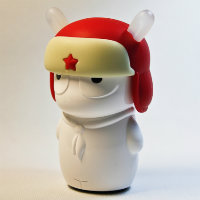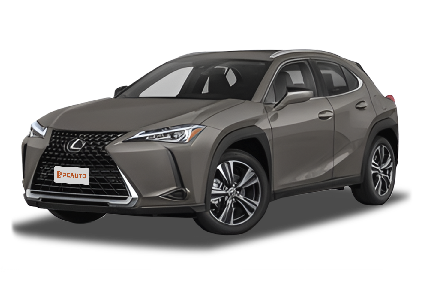Q
What is the difference between Lexus UX NX and RX?
The Lexus UX, NX, and RX are the three main SUV models that Toyota's luxury brand Lexus is pushing in the Malaysian market, with the key differences lying in their positioning, size, and powertrain options. The UX is the compact one – the smallest in the lineup – perfect for zipping around the city. It comes in the UX 200 with a naturally aspirated engine and the UX 250h hybrid, targeting younger buyers and those who value fuel efficiency.
Moving up, the NX slots in as the mid-size SUV, sitting between the UX and RX in terms of dimensions. It offers the NX 250, NX 350h hybrid, and the NX 450h+ plug-in hybrid. The NX prioritizes practical space and a more loaded tech suite.
Then there's the RX, the flagship midsize-to-large SUV with the most commanding presence. It's available as the RX 350, RX 350h hybrid, and the sporty RX 500h performance hybrid. The RX really leans into luxury and ride comfort, making it a solid pick for families.
All three sport Lexus' latest family design language, but the RX takes the cake when it comes to interior materials and sound insulation. Malaysian buyers can pick based on their needs: the UX for singles or small families, the NX for a balance of space and versatility, and the RX for that extra roomy, premium experience.
Lexus has a strong after-sales network in Malaysia too. All models come with a 5-year unlimited mileage warranty, and hybrid models get an even better 10-year warranty on the battery, giving customers plenty of peace of mind.
Special Disclaimer: This content is published by users and does not represent the views or position of PCauto.
Related Q&A
Q
What is the Toyota counterpart to the Lexus UX?
Lexus, Toyota's luxury arm, positions the UX as its entry-level crossover, and its Toyota-badged counterpart is none other than the C-HR. Both ride on the versatile TNGA-C platform, sharing core powertrains and chassis tech, but they're tuned to appeal to different crowds. The UX leans hard into that Lexus luxury vibe – think plusher materials, a more exquisite cabin, and a longer list of standard driver-assistance goodies. The C-HR, on the other hand, goes for a bold, youthful design and a friendlier price tag, making it a solid pick for style-conscious buyers watching their wallets.
Over in Malaysia, both crossovers offer hybrid options, which plays right into the local demand for fuel-efficient rides. But Lexus typically sweetens the deal with more comprehensive after-sales service and warranty packages for the UX. Here's the thing though – even with the same platform, the UX gets upgraded sound deadening and suspension tuning that prioritizes a smooth, comfortable ride, perfect if you value that premium driving feel. The C-HR, by contrast, is all about nimble handling, making it a zippy companion for city streets.
These two are a great example of how Toyota Group targets different niches. At the end of the day, it all comes down to your budget and what you prioritize in a ride.
Q
When will the Lexus UX be released?
The Lexus UX has officially hit the Malaysian market, and this luxury compact SUV is turning heads with its hybrid tech and sleek design. Local Lexus dealers usually have units in stock, though exact delivery times might vary depending on trim and color choices—your best bet is to reach out to your nearest authorized Lexus dealer for the latest inventory and wait times. As the brand's entry-level SUV, the UX packs an efficient 2.0L hybrid system that really shines when it comes to fuel economy and smooth driving, making it perfect for Malaysia's urban roads. It also comes loaded with Lexus' latest safety tech, including pre-collision systems and lane-keeping assist. In Malaysia, the UX goes up against German and Japanese rivals in the same luxury segment, but its unique Japanese luxury vibe and reliable hybrid know-how have earned it plenty of fans. Lexus Malaysia backs it up with a solid after-sales network too, including a 5-year unlimited mileage warranty and a 10-year warranty for the hybrid battery, so owners can drive with peace of mind.
Q
Where is Lexus UX made?
The Lexus UX is a globally sold luxury compact SUV, primarily built at the brand's Kyushu factory in Japan – a facility renowned for its precision manufacturing and strict quality control, ensuring every vehicle meets Lexus's global standards. For the Malaysian market, the UX comes in through official import channels, fully compliant with local regulations and tailored to meet consumer needs here. Under the hood, it packs Lexus's advanced hybrid tech, delivering impressive fuel efficiency without skimping on performance. Step inside, and you're greeted with premium materials, where attention to detail and comfort take center stage – perfect for both zipping around the city and longer road trips. In Malaysia, Lexus has built a strong reputation, backed by a solid after-sales service network that offers comprehensive support, including warranties and regular maintenance, so owners can enjoy peace of mind. Plus, the UX's compact size and nimble handling make it a great fit for Malaysia's urban roads, striking a nice balance between luxury feel and everyday practicality in an SUV package.
Q
Which is bigger? Lexus UX or NX?
In the Malaysian market, both the Lexus UX and NX are popular luxury SUV choices, but the NX is noticeably larger, slotting into the midsize SUV category compared to the UX's compact SUV positioning. The NX stretches longer, wider, and rides on a longer wheelbase than the UX, translating to significantly more interior room. Rear passengers will appreciate the extra legroom, and there's a clear advantage in boot space too – definitely the pick if you need to haul more gear or regularly ferry the family around. The UX, though, is the urban dweller's friend; its smaller footprint makes zipping through tight city streets and squeezing into parking spots a whole lot easier.
Both models come loaded with Lexus's trademark high-quality interiors and cutting-edge tech features. The NX ups the practicality ante further by offering a third-row seating option (depending on the specific variant). Under the hood, the NX typically gets more potent engine choices, including hybrid powertrains, while the UX prioritizes fuel efficiency. So, it really boils down to your space requirements and driving style when choosing between the two. And to top it off, Lexus has a solid after-sales service network in Malaysia, giving owners that added peace of mind.
Q
How much is Lexus UX?
The Lexus UX carries varying price tags in Malaysia depending on the trim and specs, generally ranging from RM243,888 to RM289,888. Keep in mind, though, that these figures can shift a bit with dealer promotions or if you opt for extra features. As a luxury compact SUV, the UX gives you two powertrain choices: the UX 200 with a 2.0-liter naturally aspirated engine, and the UX 250h hybrid which puts a bigger focus on fuel efficiency and eco-friendliness.
It's no wonder this model is a hit in Malaysia. The interior is nicely put together, it's packed with tech goodies, and let's not forget Lexus's solid reputation for reliability—all big draws for buyers here. For Malaysian drivers, the UX isn't just for city zipping; its slightly higher ride handles our mixed road conditions pretty well too.
Worth mentioning: Lexus backs it with a 4-year or 100,000 km warranty, plus free scheduled servicing. That sweetens the deal even more. If you're eyeing a luxury compact SUV, the UX is definitely in the mix, but it's smart to cross-shop with other brands in its class. Most importantly, take 'em for a spin yourself to get a real feel for how they drive and what they offer.
Q
How big is the Lexus UX?
The Lexus UX is a compact luxury SUV, measuring 4,495mm in length, 1,840mm in width, and 1,520mm in height, with a wheelbase of 2,640mm. These dimensions make it super maneuverable for Malaysian city driving – perfect for squeezing through tight backroads and navigating those cramped parking lots – while still offering enough interior space for your daily grind.
Design-wise, the UX leans into sportiness and modern style, rocking Lexus' signature spindle grille and those sharp, angular lines we know from the family. Inside, it's all about that premium feel mixed with tech, packing in a solid suite of smart driver-assist features and user-friendly infotainment.
Under the hood, you've got options: petrol or hybrid. The UX 250h, in particular, pairs a 2.0-liter four-cylinder engine with an electric motor, striking a nice balance between fuel efficiency and peppy performance – right up Malaysia's alley for folks wanting both savings at the pump and a bit of zip.
Plus, the UX sits higher off the ground, so it can handle Malaysia's mixed bag of road conditions, from smooth highways to the occasional rough patch. And let's not forget Lexus' solid after-sales network here – it gives owners peace of mind knowing support is reliable.
All in all, the UX is a strong contender in the compact SUV segment. It's ideal for young families or urban professionals who want that luxury touch without skimping on practicality.
Q
Is Lexus better than Porsche?
Lexus and Porsche are both globally renowned luxury car brands, but their product positioning and driving experiences set them apart. So, it's tough to simply say which is "better"—it really boils down to what the customer is looking for. Lexus built its reputation on top-notch reliability, super comfortable rides, and meticulous craftsmanship. That makes it a solid pick for Malaysian drivers who value day-to-day practicality and long-term durability, especially since their hybrid models are absolute stars when it comes to fuel efficiency.
Porsche, on the other hand, is all about that legendary sports performance and driving thrills. Whether it's their iconic sports cars or their SUVs, they really shine when it comes to handling and raw power—perfect for folks who live for that adrenaline rush behind the wheel. Plus, Porsche's got serious pedigree in track tech and high-performance machines; the 911, for instance, has long been the benchmark in the sports car world.
In the Malaysian market, both brands have pretty well-established after-sales service networks. But generally, Lexus tends to offer more generous warranty packages, while Porsche gives you way more options to personalize your ride. So, if comfort and keeping maintenance costs low are your top priorities, Lexus might just be your best bet. But if you're chasing driving excitement and that rich brand heritage, Porsche is probably more your speed.
My advice? Any potential buyer should definitely take both for a spin themselves, considering their own driving needs and budget. At the end of the day, how a car feels to drive is totally subjective.
Q
Should I buy BMW or Lexus?
Choosing between a BMW and a Lexus in Malaysia really comes down to your personal needs and what you value most in a car. BMWs are all about that driving thrill—sharp handling, punchy performance—perfect if you’re someone who loves a sporty ride. Models like the 3 Series or 5 Series are pretty common on local roads, so their service network is solid, though you’ll pay a bit more for maintenance.
Lexus, on the other hand, nails luxury comfort and reliability. Their hybrid tech is top-notch, which means great fuel economy—ideal if you prioritize a quiet cabin and long-term durability. Plus, Lexus offers a longer warranty here in Malaysia, so you won’t stress as much about future repairs.
Thinking about Malaysia’s hot, rainy weather? Both brands have tweaked their cars to handle the heat and humidity, but the Lexus hybrids really shine in stop-and-go traffic, saving you more at the pump.
So, if your budget allows and you crave that dynamic driving feel, go BMW. If you want something hassle-free and comfy for the long haul, Lexus is the way to go. Either way, test-driving both is a must before you decide.
Q
Which country purchases the most Lexus?
Looking at recent sales figures, the U.S. remains Lexus' biggest global market by a significant margin, consistently leading the pack year after year. A big part of that success? The brand's strong SUV lineup – think RX and NX – and the widespread popularity of its hybrid technology. Let's not forget American consumers' enduring love for luxury badges, which certainly doesn't hurt.
China isn't far behind. Lexus has carved out a solid niche there thanks to its stubborn commitment to keeping models imported and its rock-solid reputation for quality. It's especially big in southern China. Over in Southeast Asia, Thailand takes the regional crown, and that's largely down to local production giving it a leg up on pricing and tariffs.
In Malaysia, Lexus leans more into the "niche luxury" category, but it still draws in a dedicated crowd. What's the appeal? Reliable hybrid systems and, compared to those German rivals, generally lower maintenance costs – a big plus for buyers who value long-term ownership and practicality.
Interestingly, Lexus' global bestsellers, the RX and ES, both come in right-hand drive, which obviously suits Malaysia's roads. And with newer, smaller SUVs like the UX, the brand is clearly aiming to hook a younger audience. It'll be interesting to see how Lexus tweaks its Southeast Asia strategy moving forward.
If you're a Malaysian considering a Lexus, keep an eye on that 5-year free maintenance package – that's a pretty competitive after-sales perk in the luxury car space.
Q
Who sells more? BMW or Lexus?
Globally, BMW typically outsells Lexus. That's largely down to BMW's deeper heritage as a German luxury marque and its broader global footprint – the brand performs particularly strongly in Europe and China. Lexus, Toyota's premium arm, has a solid following in North America and select Asian markets like Malaysia, but its overall sales volume still can't match BMW's.
Here in Malaysia, BMW continues to hold a bigger slice of the pie, thanks to its sporty-luxury image and well-established dealer network. Lexus, on the other hand, draws in buyers who prioritize comfort and eco-friendliness, with its reputation for bulletproof reliability and strong hybrid tech lineup being major selling points.
It's worth keeping in mind that luxury car sales are heavily influenced by economic conditions, model refresh cycles, and local policies – Malaysia's national car program, for instance, can indirectly impact the market share of imported luxury brands.
At the end of the day, it boils down to what you're after. BMW is the go-to for those chasing driving thrills, while Lexus caters better to folks who value a quiet cabin and lower long-term running costs.
Popular Cars
Model Year
Car Compare
Car Photo
Latest Q&A
Q
Why is gasoline a fuel?
Gasoline can serve as a fuel because it possesses core properties suitable for providing power and the ability to convert energy. It is a hydrocarbon mixture obtained through fractional distillation and cracking of petroleum, mainly containing C5-C12 aliphatic hydrocarbons, naphthenes, and a small amount of aromatic hydrocarbons. It is characterized by volatility and flammability, with low viscosity facilitating smooth flow in injection systems, and rapid evaporation enabling quick formation of a uniform combustible mixture with air. Gasoline stores chemical energy; when ignited by a spark plug in the engine combustion chamber, it burns rapidly to release a large amount of thermal energy, which pushes the piston to move and converts into mechanical energy, providing power for vehicles such as cars and motorcycles. In addition, the anti-knock property of gasoline (measured by octane number) can adapt to engines with different compression ratios, ensuring stable operation and performance; it has a high energy density, storing more energy per unit volume, good combustion efficiency, and high availability of gas stations for convenient use. Therefore, it has become the main fuel for spark-ignition internal combustion engines and is widely used in transportation and related fields.
Q
What are 1st, 2nd, and 3rd family gases?
The first, second, and third family cars are vehicle categories classified based on the stages of family car-purchasing needs. The first family car is an entry-level economical model, such as the Perodua Axia and Proton Saga, priced at approximately 30,000 to 50,000 Malaysian ringgit. It emphasizes fuel efficiency and practicality, making it suitable for young families purchasing a car for the first time. The second family car falls into the mid-range category, offering more space and enhanced features, such as the Proton Persona and Toyota Vios, priced between 60,000 and 100,000 Malaysian ringgit, catering to the comfort requirements of growing families. The third family car is a premium model or an MPV/SUV, such as the Proton Exora and Honda CR-V, priced above 100,000 Malaysian ringgit. It boasts spacious interiors and upscale configurations, ideal for larger families or long-distance travel. Malaysian consumers typically prioritize fuel efficiency, maintenance costs, and space when selecting a vehicle. Families at different life stages adjust their car choices accordingly. For instance, small families may begin with the first category, upgrade to the second after having children, and larger families often opt for the third category.
Q
What are the four types of natural gas?
Natural gas can be classified into four main types based on its source: gas field gas (pure natural gas), associated petroleum gas, condensate field gas, and coalbed methane. Gas field gas is directly extracted from gas wells, typically containing over 90% methane with minimal impurities. Associated petroleum gas is a byproduct of oil extraction, containing not only methane but also significant amounts of other hydrocarbons such as ethane and propane. Condensate field gas yields light hydrocarbon fractions during extraction, characterized by a high methane content and small quantities of heavier hydrocarbons like pentane. Coalbed methane is extracted from underground coal seams, primarily consisting of methane and nitrogen, and must have a methane content exceeding 40% to be utilized as fuel. Due to compositional differences, these natural gas types vary in calorific value and applications. The first three are commonly used for urban gas supply, whereas coalbed methane requires purification before effective utilization. As a clean and efficient energy source, the development and utilization of these diverse natural gas types play a crucial role in optimizing energy structure.
Q
What are the three types of fuel gas?
Common fuel gases are mainly divided into three types: natural gas, liquefied petroleum gas (LPG), and manufactured gas. Natural gas is a flammable gas existing in nature, with methane as its main component. It is colorless and odorless, leaves no residue after combustion, and has high thermal efficiency, making it a clean energy source. Liquefied petroleum gas is a by-product of the petroleum refining process, whose main components include propane and butane. It is a gas at room temperature but can be converted into liquid through pressurization and cooling, facilitating storage and transportation. Manufactured gas is generated through thermochemical reactions of fossil fuels such as coal or petroleum under specific conditions, with main components including hydrogen, carbon monoxide, and methane. It has low production costs but produces certain pollution after combustion, so ventilation should be ensured during use. These three fuel gases have different application scenarios in the energy supply field, and their calorific values and usage characteristics also vary. For example, the calorific value of natural gas is approximately 33,000-36,000 kcal per cubic meter, that of LPG is about 90,000 kcal per kilogram, and that of manufactured gas is roughly 3,500-4,200 kcal per cubic meter. The different calorific values make them suitable for different energy demand scenarios such as households and industries.
Q
Is unleaded petrol a gas?
Unleaded gasoline is not a gas but a liquid fuel. It refers to gasoline with a lead content of less than 0.013 grams per liter and without the addition of tetraethyl lead as an anti-knock additive during the refining process. Its octane rating is typically 95, slightly lower than the 97 of leaded gasoline. The use of unleaded gasoline can effectively reduce emissions of harmful substances such as hydrocarbons, carbon monoxide, and nitrogen oxides in vehicle exhaust, thereby lowering pollution risks including smog, toxic gases, and acid rain. However, it should be noted that while unleaded gasoline contains no artificially added lead, it still retains trace amounts of lead from crude oil. Additionally, its combustion releases gases, particulate matter, and condensates, with particles smaller than 2 microns in diameter being particularly prone to prolonged suspension in the air and subsequent human inhalation. Thus, potential health impacts remain a concern. Currently, most vehicles can use unleaded gasoline directly, though certain models require selecting the appropriate octane grade as recommended by the manufacturer to ensure optimal engine performance and longevity.
View MoreRelated News

Lexus GX550 is here, a luxury version of the Toyota Land Cruiser Prado, priced from RM 780,000
RobertDec 8, 2025

Rare big move, Toyota releases three sports cars: GR GT, GR GT3, Lexus LFA Concept
JamesDec 5, 2025

Rare move, Toyota will release three important models in one go on December 5th
AshleyDec 4, 2025

Lexus LS may turn into a six-wheel MPV, so why does the LS Concept use a six-wheel design?
MichaelOct 16, 2025

Lexus launches LS 500 Heritage Edition in the United States, which may be discontinued afterwards
Kevin WongSep 28, 2025
View More













 Cars
Cars




Pros
Cons